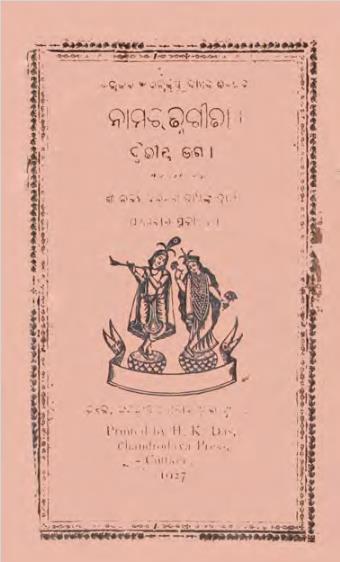Namaratna Gita, published in 1927 by the philosopher and writer Dina Krusna Das, stands as a significant contribution to Odia philosophical literature. This text, which can be translated as The Song of the Name Gems, delves into the intricate relationship between spirituality, morality, and the human experience. Through its profound insights and reflective prose, Namaratna Gita invites readers to engage in a journey of self-discovery and contemplation, making it a timeless work in the field of philosophy.
At its core, Namaratna Gita serves as a philosophical discourse that explores fundamental questions about existence, purpose, and the nature of the divine. The text is structured in a manner that combines poetic elements with philosophical arguments, making complex ideas accessible to a broader audience. Dina Krusna Das employs a unique narrative style that intertwines personal reflections with universal truths, encouraging readers to reflect on their own beliefs and values.
The title itself reflects the essence of the work—Namaratna signifies the ‘precious gems of names,’ suggesting a treasure trove of knowledge derived from the exploration of the divine and the importance of the sacred in everyday life. The text encourages readers to seek wisdom through introspection and to recognize the significance of spiritual practices in attaining a deeper understanding of oneself and the world.
Dina Krusna Das delves into several philosophical themes in Namaratna Gita, including the nature of reality, the pursuit of truth, and the importance of ethical living. He emphasizes the concept of ‘Dharma,’ or righteous living, as essential to personal fulfillment and societal harmony. The text articulates the idea that understanding one’s inner self and aligning with ethical principles can lead to a more meaningful life.
Another prominent theme in the work is the exploration of the divine. Das discusses the interconnectedness of all beings and the role of spirituality in navigating the complexities of human existence. He encourages readers to embrace a holistic view of life, recognizing the divine presence in nature, relationships, and personal experiences.
Namaratna Gita was published during a transformative period in India’s history, characterized by a resurgence of interest in indigenous philosophies and spiritual practices. In the early 20th century, intellectuals began exploring traditional Indian thought in the context of modern challenges, seeking to reconcile ancient wisdom with contemporary issues. Das’s work aligns with this broader movement, contributing to the dialogue on spirituality and ethics in a rapidly changing society.
The text reflects the socio-religious landscape of Odisha, where traditions and modernity converged. By addressing universal philosophical questions through a localized lens, Das provides a culturally resonant framework for readers to explore their spiritual journeys.
Namaratna Gita has had a lasting impact on Odia philosophical literature, inspiring generations of thinkers and spiritual seekers. Its innovative approach to philosophy, combining poetic expression with deep inquiry, has made it a valuable resource for understanding the complexities of life. The text continues to be studied in academic circles and holds relevance for those seeking wisdom in both personal and communal contexts
Books Info
| Books name | Namaratna Gita / ନାମରତ୍ନ ଗୀତା |
| Author | Dina Krusna Das |
| No Of pages | 74 |
| Publisher | NA |
| Publication | 1927 |
| Printed At | NA |
| Distributor | NA |

